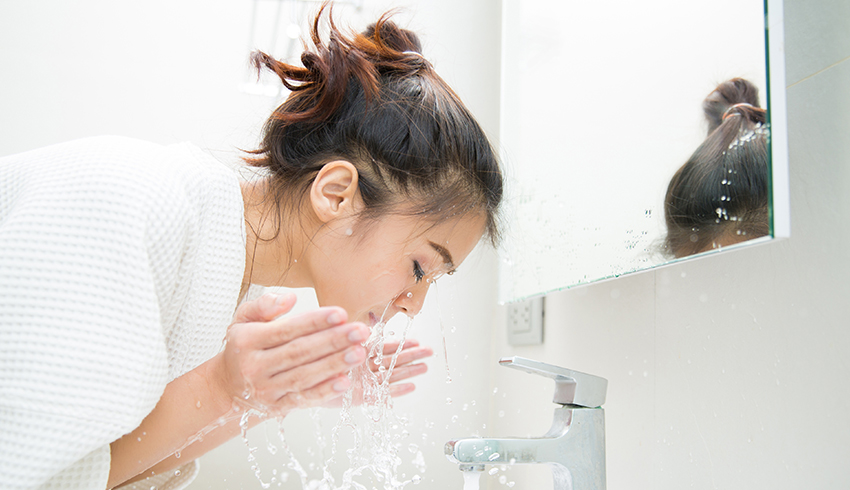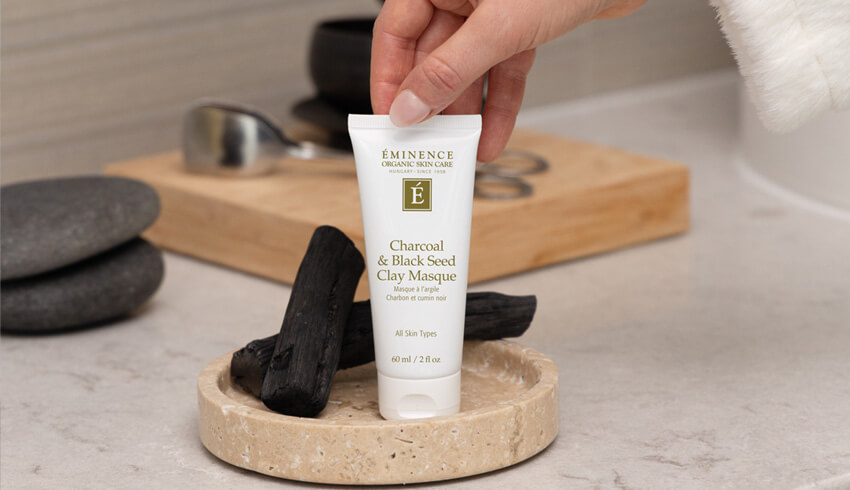
Do you know how to layer your sunscreen and moisturizer? When building your perfect skin care routine, protection from the sun should be priority number one, although, of course, you can’t forget hydration. If you aren’t sure of the best way to use sunscreen, what to look for in a moisturizer or if you should apply your moisturizer before or after sunscreen, Eminence Organic Skin Care has you covered.
How To Use Sunscreen Correctly
As noted in an article from Prevention: “Nine out of 10 people don't do a good enough job when applying sunscreen. Just 25% of people got complete coverage of sunscreen over any one area.” Every morning, but especially if you plan to spend a day in the sun, we recommend applying one teaspoon of sunscreen to your face. And for the body? Approximately one ounce to coat your entire body effectively, with re-application every two hours. Dr. Darrell Rigel reminds Good Housekeeping of the areas most commonly missed in sunscreen application, including “around the eyes, the tip of the nose, the tops of the feet, the lips and near the hairline and scalp.” Ensure that you take just as much care applying to these places as you do to other areas of the body.
When picking a sunscreen, you can choose from one of two categories: chemical or physical (mineral) sunscreen. Both provide effective sun protection but differ in their active ingredients and the way they protect the skin. Chemical sunscreens contain organic compounds that absorb UV rays, convert them into heat, then release them from your skin. Physical sunscreens, on the other hand, use minerals like zinc oxide and titanium dioxide to physically block UV rays and reflect them from your skin's surface.
Product Picks
There are three basic categories of moisturizer: occlusive, humectant and reparative. Reparative moisturizers are also known as third generation moisturizers as they include the properties of both occlusive (first generation) and humectant (second generation) moisturizers.
If you are dealing with dryness or skin that is feeling irritated from the elements, Dr. Lily Talakoub of McLean Dermatology and Skincare Center says: “Moisturizers need to have all three properties. Humectants hold water in the skin. Occlusives prevent moisture from evaporating off the top of the skin. Reparative moisturizers deliver moisture to the skin. All three properties are essential for proper hydration of the skin.” So what are some key ingredients to keep an eye out for? Eminence Organics Lead Skin Care Trainer Natalie Pergar recommends to “look for a moisturizer that contains jojoba or sunflower oil (popular occlusives) and a lactic acid or honey (popular humectants).”
Which Comes First - Sunscreen Or Moisturizer?
Applying sunscreen on top of your other products will provide not only a protective SPF barrier but will also seal in moisture. When it comes to layering products, we recommend applying sunscreen as the last step in your skin care routine, after the application of your favorite serum, oil and moisturizer. Applying sunscreen on top of your other products will provide not only a protective SPF barrier but will also seal in moisture, keeping your skin soft, supple and hydrated. This being said, when it comes to your makeup routine, always apply makeup primer after SPF. After completing your skin care regime, allow your SPF to fully absorb for about one to two minutes. Then smooth on your makeup primer and other products.
Sunscreen, Or Moisturizer With SPF?
Alternatively, you can simplify your routine by swapping out your regular moisturizer for a moisturizer with SPF. This will provide protection that is just as effective as sunscreen alone, and you’re more likely to remember to apply daily! Eminence Organics President Boldijarre Koronczay says: “There are some fantastic day creams that contain SPF and are a good two-for-one option.” Favorites include Eminence Organics Lilikoi Mineral Defense Moisturizer SPF 40. If uneven skin tone is a concern, try the Bright Skin Moisturizer SPF 40, which includes a Natural Hydroquinone Alternative to lighten the look of dark spots on your complexion.
Don’t forget to protect your lips as well. Moisturize and protect dry lips with our Rosehip & Lemongrass Lip Balm SPF 15. The natural SPF 15 in this hydrating lip balm stick defends lips against harmful UV exposure, while soothing rosehip oil relieves dryness for a perfectly protected pout.
Reparative Moisturizers For Night
Nighttime skin care is the perfect time to include a reparative moisturizer to heal dry skin caused by sun damage and environmental stressors. Natalie suggests our Monoi Age Corrective Night Cream For Face & Neck to heal dry skin and address the visible signs of aging. Another option is our Linden Calendula Treatment, a cream that can be used either as a masque or as a night treatment. The extracts derived from fresh linden and calendula plants deeply nourish and refresh the skin’s appearance, and fine herbal oils restore the look of youthfulness and elasticity while you sleep.
The Importance Of Sunscreen
Both UVA and UVB rays play a key role in accelerating the visible signs of aging, including the development of fine lines and wrinkles, sagging skin and pesky dark spots. Skipping sunscreen not only contributes to premature aging but also puts you at risk of developing skin cancer. Top dermatologists recommend sunscreen as the most important element of any skin care routine (Bustle). In addition to SPF protection, they advise staying out of the sun during its peak hours (10 a.m. to 2 p.m.) and wearing hats, sunglasses and clothing that protect you from the sun’s harmful rays.
Wanting to test out the products mentioned in this article? Find your favorites at an Eminence Spa Partner near you and tell us about them in the comments below! Don’t forget to join the conversation on social media.




